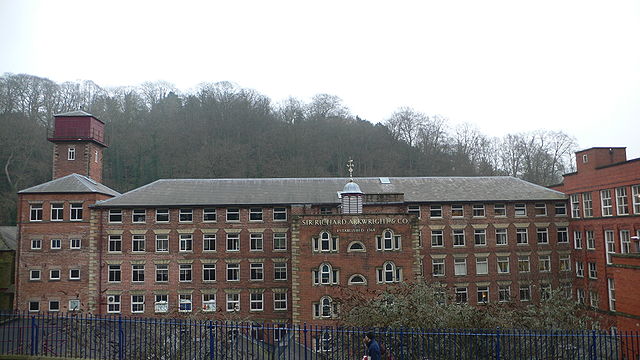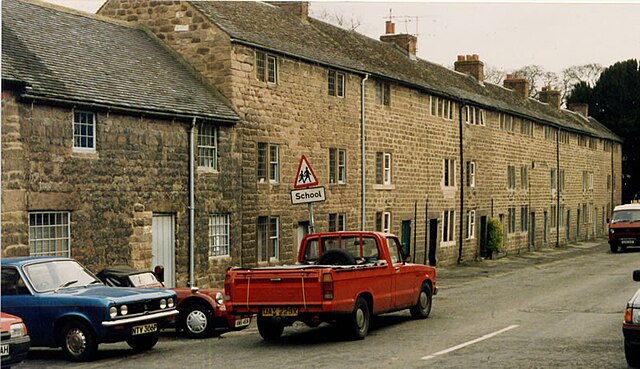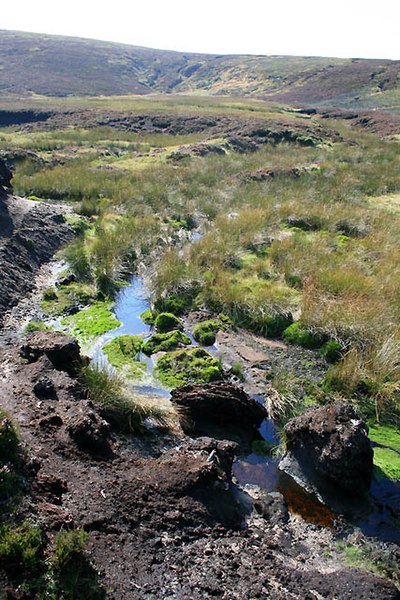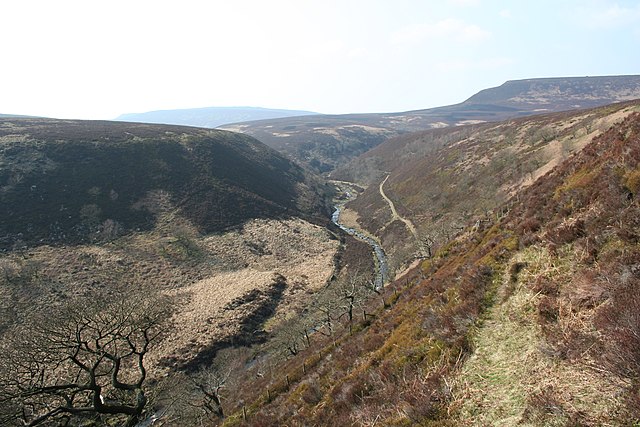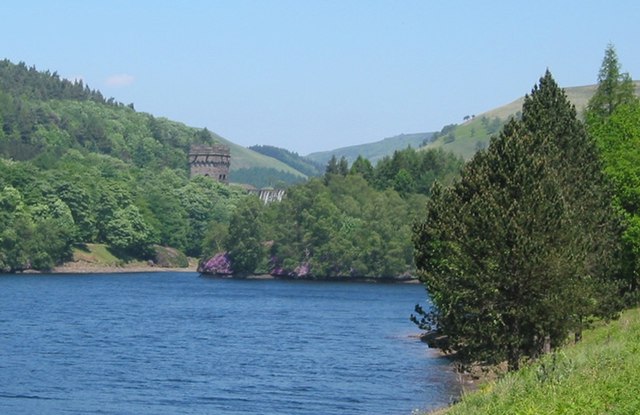Derwent Valley Mills is a World Heritage Site along the River Derwent in Derbyshire, England, designated in December 2001. It is administered by the Derwent Valley Mills Partnership. The modern factory, or 'mill', system was born here in the 18th century to accommodate the new technology for spinning cotton developed by Richard Arkwright. With advancements in technology, it became possible to produce cotton continuously. The system was adopted throughout the valley, and later spread so that by 1788 there were over 200 Arkwright-type mills in Britain. Arkwright's inventions and system of organising labour was exported to Europe and the United States.
Masson Mills, Derwent Valley
Lombe's silk mill
Model of a water frame at the Historical Museum in Wuppertal
Workers' cottages in Cromford
River Derwent, Derbyshire
The Derwent is a river in Derbyshire, England. It is 50 miles (80 km) long and is a tributary of the River Trent, which it joins south of Derby. Throughout its course, the river mostly flows through the Peak District and its foothills.
The River Derwent, near Hathersage
Boggy ground in Swains Greave, on Bleaklow
The river in its highest stretch, on Howden Moor close to the source
Derwent Reservoir, with river water cascading over Howden Dam, and Howden Moor in the background

